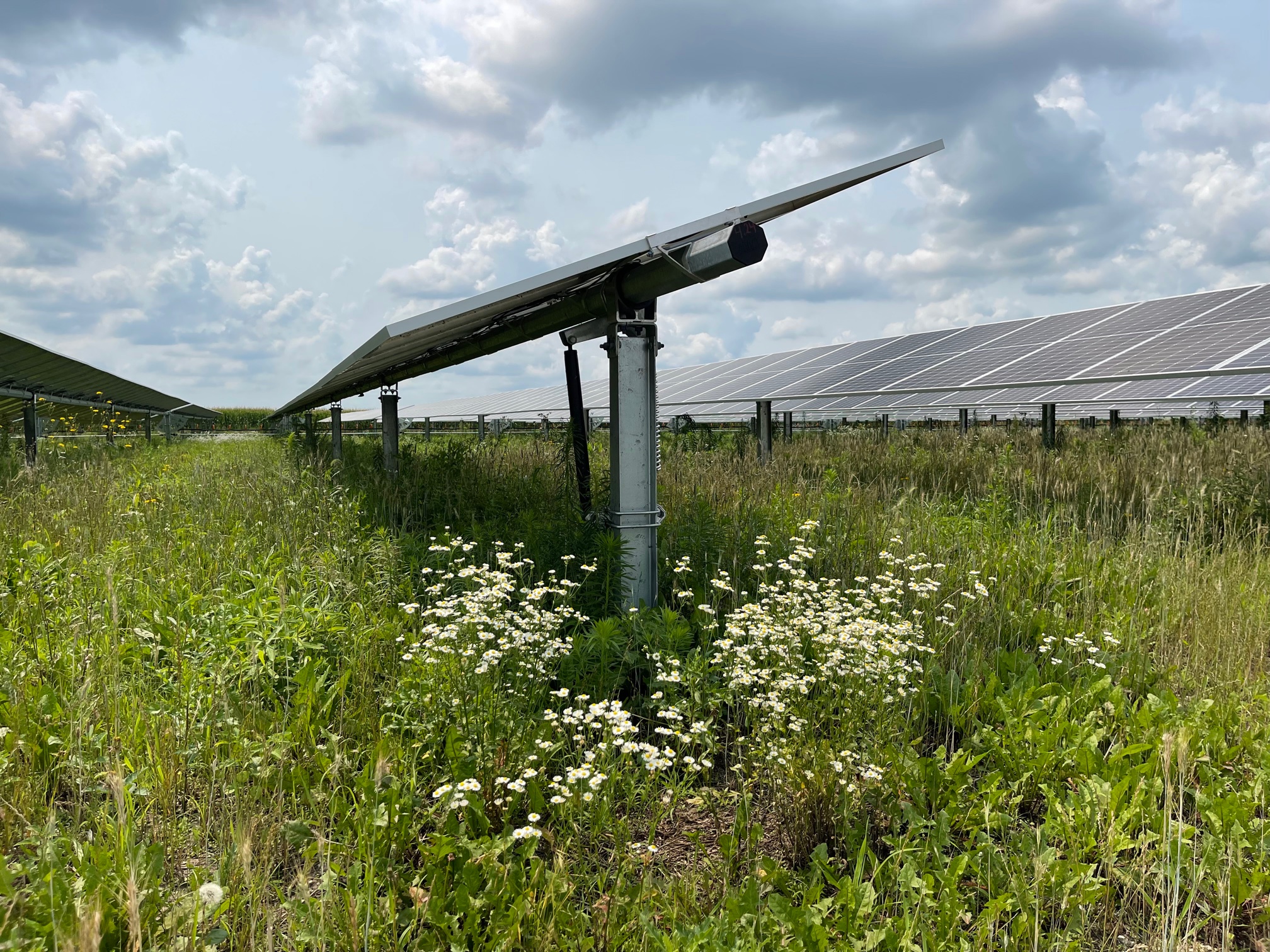Exploring the Local Benefits of Community Solar
May 16, 2022

While solar has been around for decades and its benefits are well known, communities are naturally curious when they hear about the development of solar in their own town, especially when they hear it called by a new name: community solar.
Community solar is an arrangement where households or businesses subscribe to an offsite community solar garden. By doing so, they are able to support the development of solar and encourage broader renewable energy uptake, even if they have logistical restrictions that would prevent them from installing onsite rooftop solar. This configuration also offers immense, perhaps unexpected, events for the communities hosting the solar gardens.
In today’s blog, we will explore the myriad positive impacts of community solar on local communities hosting solar gardens, ranging from supporting solar jobs in the area to facilitating improved air and water quality.
Environmental Benefits
Let’s start with the most obvious benefit of community solar: the environmental impact of the project.
Each new solar energy project that is interconnected to the grid results in new clean energy generation and avoidance of a massive amount of carbon emissions. Reducing carbon emissions is crucial in the fight against climate change and the associated extreme weather patterns: rising sea levels, increased frequency of natural disasters, endangerment and extinction of species in disappearing habitats, and the list goes on. Solar uptake also mitigates air and water pollution compared with fossil fuel sources.
On a more micro-scale, solar gardens can even be designed to provide refuge for local plants and animals, particularly pollinators like bees and butterflies which are facing dwindling numbers. With this in mind, many solar gardens are developed to allow for the growth of local wildflowers on the land underneath them, creating a healthy ecosystem that supports pollinators and the survival of heirloom varieties of native plants. Solar panels are also carefully designed to have minimal impact on the ground beneath them. After the lease term of a solar garden is up (often 20-30 years), the panels can be removed entirely for recycling, allowing the land to be repurposed, even for land-intensive uses such as growing crops.
Benefits to Households
Cleaner air and water is great for the environment, but also directly impacts the health of households living nearby. Sadly, many communities bordering fossil fuel extraction sites, refineries, and fossil fuel-based power plants face associated health risks. In fact, research published in the Journal of the National Cancer Institute indicates that proximity to an oil refinery is associated with a statistically significantly increased risk of incident cancer diagnosis across all cancer types. Opting for clean energy facilities over fossil fuel infrastructure is a net positive in terms of public health.
Community solar also offers financial benefits for households. The cost of offsetting your electricity needs through a community solar subscription results in bill-credit savings as compared to non-community solar households. Thus, expanding local access to clean energy through programs like community solar creates tangible benefits such as reducing the energy burden for millions of households.
Benefits to the Local Economy
The development and operation of community solar gardens also immensely impacts the local economy. The community solar industry supports jobs in construction, engineering, operations and maintenance, and much more. This also has downstream effects; during construction of a new solar garden, workers frequent local restaurants, hotels, and gas stations, supporting local main street businesses. In addition, solar farms generate hundreds of thousands of dollars of property taxes over their operational lives, creating new funds for area schools, libraries and road repairs.
The land-lease payments paid out as part of community solar garden development are also financially beneficial for local community members. Community solar gardens are developed on land leased from landowners in the area, typically for 20 to 30 years, in exchange for land lease payments. These land lease payments are especially helpful for farmers who have dealt with a tough last few years, struggling with low crop yields caused by extreme weather patterns and climate disasters as well as trade wars and the rising cost of agricultural inputs like fertilizer. With solar, farmers who may struggle to make ends meet only farming corn or wheat can find financial stability by harvesting sunshine on their land.
The Benefit of Resiliency
Community solar gardens fall into a category of development called “distributed generation” which can offer additional resiliency compared to traditional power plants that are centralized and often developed away from the customers they are supplying. With solar gardens, power is more distributed, meaning that it comes from multiple sources spread over an area. This offers resiliency in the face of climate disasters and severe weather, where in a traditional power system, a community reliant upon one main power plant may suffer a mass outage if the plant is damaged. In a scenario with more distributed generation, the impact will be limited to a smaller geographic area, minimizing the scope, length, and ultimately the overall impact of power failures.
Community Solar: An Abundance of Community Benefits
At the local level, community solar offers vast, unique benefits beyond what you’d expect from general solar development. Community solar can give households and businesses alike an opportunity to save money, contribute to better air and water quality, build resiliency into our electricity infrastructure, and directly support the transition to clean energy. If you’re considering community solar, contact the team at Pivot today.

.jpg?width=123&name=Angie%20Agrivoltaics%20Award%20(HQ).jpg)


.jpg?width=400&name=Angie%20Agrivoltaics%20Award%20(HQ).jpg)
